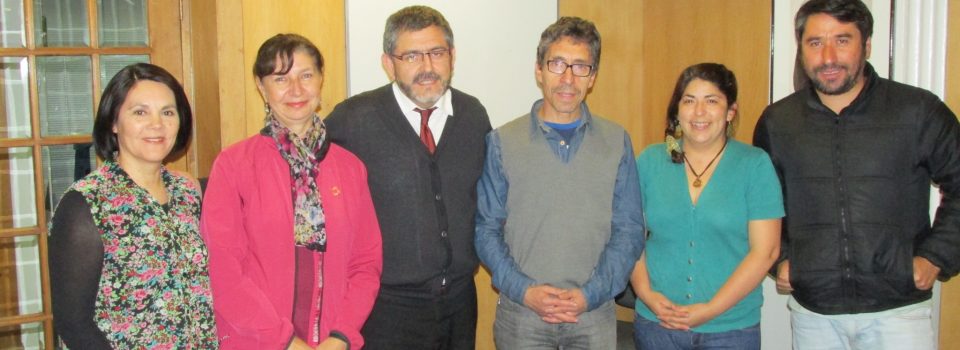Researchers delegation participates in X Congress of Marine Sciences in Cuba
December 15th, 2015Attended by scientists from the Institute of Fisheries Development; Cecilia Machuca, Antonio Aranis, Nancy Barahona, Karen Belmar, Guillermo Moyano and Edison Garces
Between 16 to 20 November at the Palace of Conventions, Havana, Cuba, will be held X Congress of Marine Sciences. Its slogan “Integration of Science for Marine Resources Management”, the event gathers scientists and professionals linked to marine sciences
The issues addressed by the conference are: Human Impact and Risk Management, Climate Change, Conservation, Biodiversity, Biotechnology and Food Security.
Cecilia Machuca, marine technologist IFOP, referred to his participation “I go with a poster and my theme to present” Determination of population units Anchovy in the South Pacific off Chile using morphometry otolith “was ranked in the Biotechnology mode and Food Security ”
Nancy Barahona, fishing engineer said about his involvement in the activity “consider relevant IFOP professionals can participate in events of this nature in order to socialize our work with professionals from other institutions and countries, as well as learn from the experiences and work being done worldwide ”
Nancy, will present “urchin fishery in Chile: A driving experience”, an alternative for the management of benthic fisheries management plans are applied in open access areas. In Chile this instrument of public-private formal management was applied for the first time in one of its most important, the hedgehog benthic fisheries, which is distributed in a vast and complex area in fjords and channels, providing more than 50% of the volumes This global resource. The management plan allows the operation of over 1,000 divers and extracting 600 boats in a large geographic area.
Marine biologists Antonio Aranis, Edison Garces, Karen Belmar and Guillermo Moyano detailed us their work.
Antonio, will present the topic “environment resource characterization of pelagic fisheries in the south central region of Chile 2013-2014” on it the spatial distribution of the pelagic fishery in the central-southern Chile was analyzed using the position of the sets industrial fishing of mackerel, mackerel, cuttlefish, mountains and sets agujilla and artisanal fishing of anchovy, sardine and nickname, between January 2013 and December 2014.
monthly satellite data of sea surface temperature (SST), satellite chlorophyll (Cloa) and geostrophic currents were incorporated. SST satellite data (2002-2014) allowed to calculate monthly climate of the area and the SST anomaly. From satellite TSM surface gradient (GTSM) was calculated to represent the fronts of thermal origin in the area
Edison, shows the study “Distribution temporary space line kite (chilensis Zearaja) and thorny skate (Dipturus trachyderma) in artisanal fisheries in Chile” collects information for monitoring the fishery stingray kite between 2007 and 2013, executed by the Fisheries Development Institute. The objective was to analyze the spatial and temporal distribution of Zearaja chilenesis and Dipturus trachyderma in artisanal fisheries operating with gillnet and longline between the IV and XII region. For this chilensis individuals Zearaja and 2853 specimens were sampled Dipturus trachyderma, recording biological parameters (total length, weight and sex), physical (bathymetry) and geolocation
Karen, display “Changes in the population structure of cuttlefish (Dosidicus gigas) in south central Chile” the work aims to evaluate and determine whether there is any variation in the population structure of jumbo squid (Dosidicus gigas) for the past four years (2011- 2014). For this purpose the structure size (length robe) of specimens from Valparaiso and Bio Bio, which represent respectively the artisanal and industrial fleet was analyzed. data on fishery dynamics for both fleets were collected, including fishing depth, georeferencing hauls, fishing hours, among others. In addition mantle length was obtained copies
Guillermo, explained “parameters life story of bream in the south-central Chile” The fishery bream, takes place in south-central Chile (33 ° 00’S-41 ° 10’S) area, between 100 and 550 m deep, although higher densities are between 250 and 300 m.
In order to increase knowledge of the biology of this resource, major life history parameters were estimated. The growth parameters obtained from reading sagitta otolith annuli where the location of the first annulis was verified by analyzing daily microincrements. The results show that the species reaches a lifespan of around 70 years.

